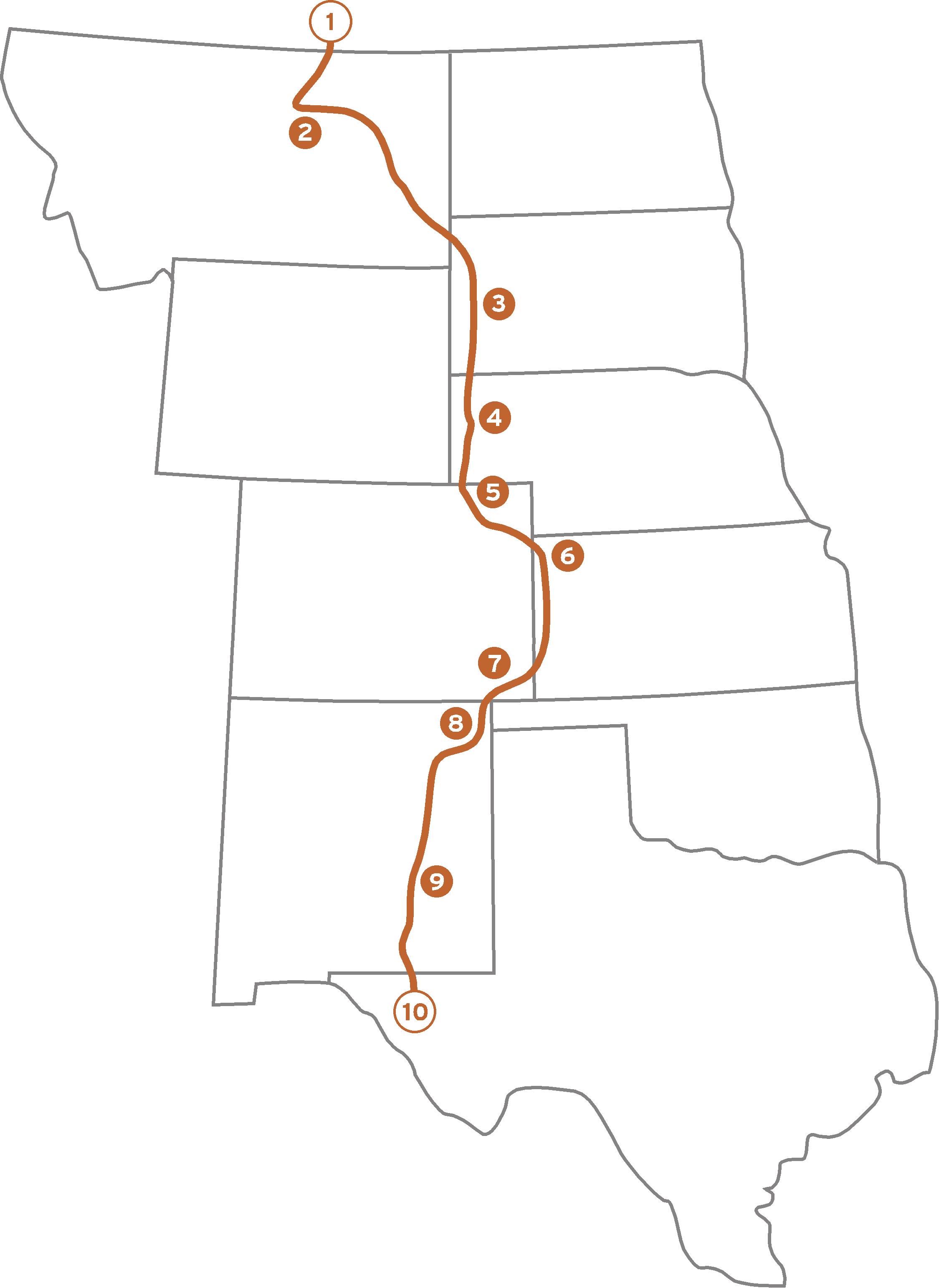 The last river we will discuss here is the Pecos River. The Pecos River begins in the higher reaches of the southern end of the Sangre de Cristo Mountains just to the northeast of Santa Fe, New Mexico. This is a high alpine area with some peaks rising above 13,000 feet. From there, the river quickly descends onto the plains of eastern New Mexico and begins its slow southeastward journey across eastern New Mexico and western Texas.
The last river we will discuss here is the Pecos River. The Pecos River begins in the higher reaches of the southern end of the Sangre de Cristo Mountains just to the northeast of Santa Fe, New Mexico. This is a high alpine area with some peaks rising above 13,000 feet. From there, the river quickly descends onto the plains of eastern New Mexico and begins its slow southeastward journey across eastern New Mexico and western Texas.
The Pecos River is not a particularly voluminous river, although in times of flood it can reach levels as high as the Missouri is at times. The reason for its generally lower flow is that once it leaves the high country of the mountains, it flows through a decidedly desert region. Average rainfall in the region is typically around 10 inches per year. The Pecos eventually joins the Rio Grande River near the town of Del Rio, Texas, and then, of course, to the Gulf of Mexico. Of the major rivers we have discussed, it is the only one that does not join the Mississippi River.
The Pecos is probably most famous for being a line of demarcation that separated the East and the West, particularly in the southwestern Untied States, and most notably in Texas. The saying “west of the Pecos” was a way to imply that geography as well as culture would be different, depending on what side of the river you were on. It’s true that the lands of far western Texas are vastly different from most of the rest of the state. West Texas is a true desert and contains rugged mountains, some of which attain elevations above 8,000 feet. The eastern part of the state is relatively level and, in general, receives more rainfall.
It’s equally true that culture was different on the western side of the river. The saying itself could perhaps be attributed to “Judge” Roy Bean, who opened a saloon just to the west of the river in Texas in 1882. He dubbed himself “The Law West of the Pecos,” and ran a somewhat dubious courtroom out of his saloon near the town of Langtry. These were the days of the “Wild West,” and the rule of law was scarce in some parts of the country. The Pecos River served as a dividing line between the relatively settled and civilized East, and the unorganized collection of souls who wandered the wide open spaces of the West.


